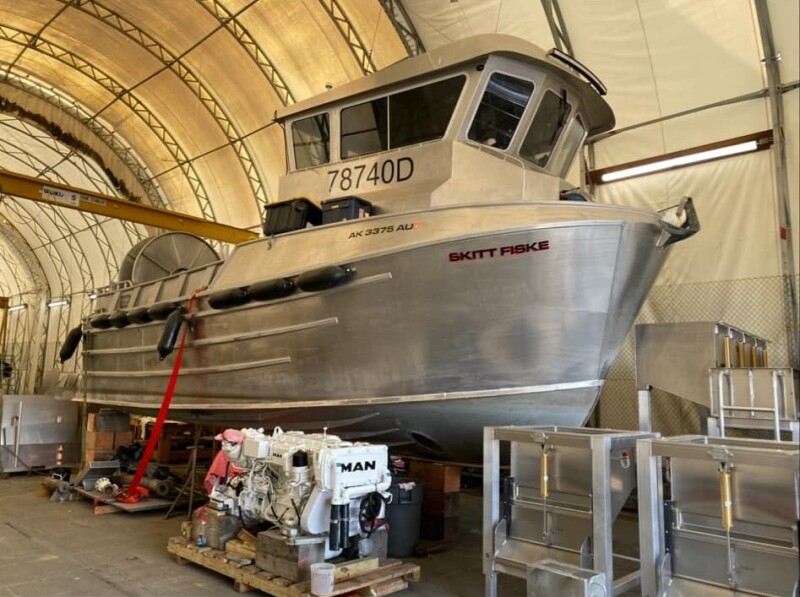Fishermen and their diesel engines are partners—they rely on each other—and every fisherman has a preference based on experience and stories. Ask ten fishermen what the best diesel engine is, and you’re likely to get ten answers. An informal survey on a couple of fishing pages on FaceBook yielded hundreds of opinions from fishermen in the U.S., Canada, and elsewhere, more than would ever fit this blog. Fishermen lauded almost every engine on the market. Many are running antique mechanical Cats, and a Ford Lehman gets a vote of confidence. The 6140 mechanical Luggers are highly spoken of, as is the John Deere’s, particularly the 9-liter.
Many sing the praises of the Jimmys, among them Lawrence Lamee of Florida. “Oil slinging 671s. They’re workhorses!” he says.
An older Rolls Royce from England gets a vote, as does an 8LXB Gardner, which has no service or distribution outside England. Volvo-Pentas are also admired by many fishermen.
MAN engines are praised by Karl Pettersen, a Bristol Bay fisherman, and cursed by Ivan Basargin, of Homer, who had problems in the 1990s and says he can’t convince himself to buy another.
Pettersen is a diesel engine mechanic and now service manager at Northern Lights, which has become the MAN distributor in Seattle. He has worked on many of the engines above and speaks very highly of the mechanical Cummins engines. “Mechanical b and c series Cummins are hard to beat,” says Pettersen. “The b’s are not rebuildable, so if you score a liner, you’re SOL, but that doesn’t seem to happen much.” Pettersen. “I currently have a MAN I6 on my boat and have been very happy with it.”
Pettersen notes, as do others on the thread, that all makes of engines will eventually have problems, and the best engine is the one you can keep running, especially in a short-season fishery or when the target species is abundant. “I get asked a lot, which is the best engine?” says Pettersen. “My answer is always the same. You should not base your purchase on the engine but on the support that comes after the sale and after the warranty.”
Most engine manufacturers make service it a big selling point, but the need for quick parts and knowledgeable technicians is particularly acute in remote areas such as Alaska. “I have my computer on board, and when I’m up there fishing, people will ask me questions. I can usually jump aboard, plug in, and diagnose the problem. If it’s something simple, we have parts in Naknek and Anchorage. If it’s something less common, we might have to get a part from Seattle or Florida.”
While Cat, Cummins, and other major manufacturers boast big networks of reliable service, Pettersen notes that some boats would be advised to keep a spare engine because parts for them can take a long time to get to Alaska. “I’m working on getting the MAN service in the Bay up to the level where it used to be,” he says. “If someone has a problem with a MAN here, and they have to go to Naknek or need a technician to come to them, I can usually have everything ready for them. If they need a turbo, for example, we can possibly have it flown out the same day, the next at the latest, and then it’s about a 6-hour installation, and most of that is draining fluids and doing a sea trial.”
Based on the Facebook posts, all engines have attributes that endear them to some or turn others away, but the common theme is serviceability. When it’s time to fish, your partner has to be ready to work.







